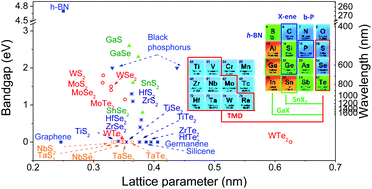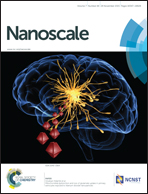Two-dimensional transition metal dichalcogenide alloys: preparation, characterization and applications
Abstract
Engineering electronic structure of atomically thin two-dimensional (2D) materials is of great importance to their potential applications. In comparison to numerous other approaches, such as strain and chemical functionization, alloying can continuously tune the band gaps in a wide energy range. Atomically thin 2D alloys have been prepared and studied recently due to their potential use in electronic and optoelectronic applications. In this review, we first summarize the preparation methods of 2D alloys (mainly on transition metal dichalcogenide (TMD) monolayer alloys), including mechanical exfoliation, physical vapor deposition (PVD), chemical vapor deposition (CVD) and chalcogen exchange. Then, atomic-resolution imaging, Raman and photoluminescence (PL) spectroscopy characterization of 2D alloys are reviewed, in which band gap tuning is discussed in detail based on the PL experiments and theoretical calculations. Finally, applications of 2D alloys in field-effect transistors (FETs), photocurrent generation and hydrogen evolution catalysis are reviewed.


 Please wait while we load your content...
Please wait while we load your content...